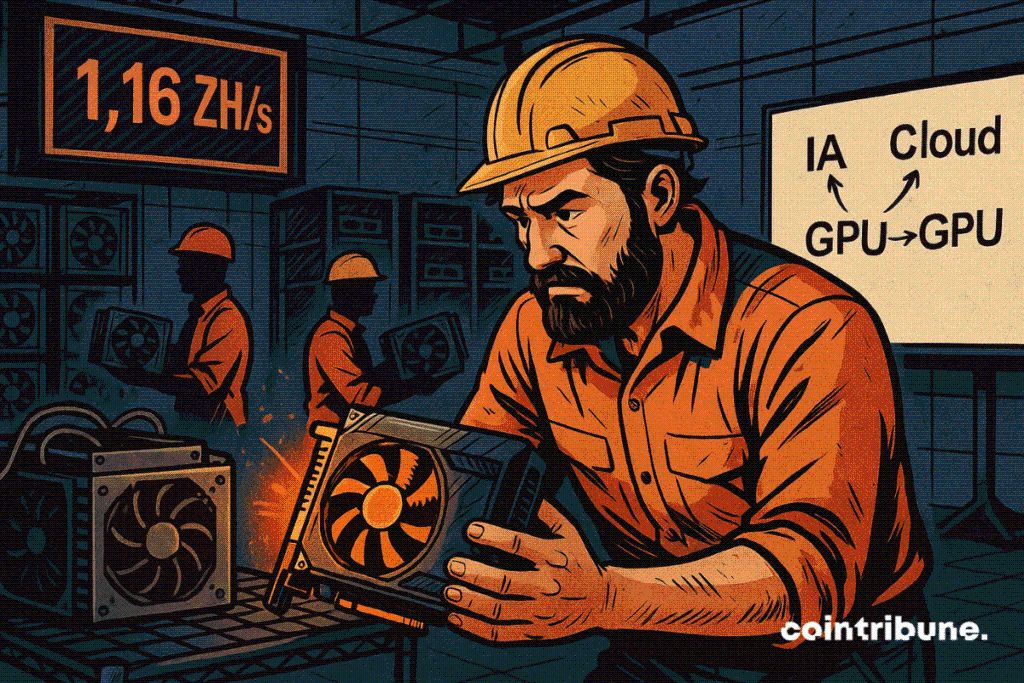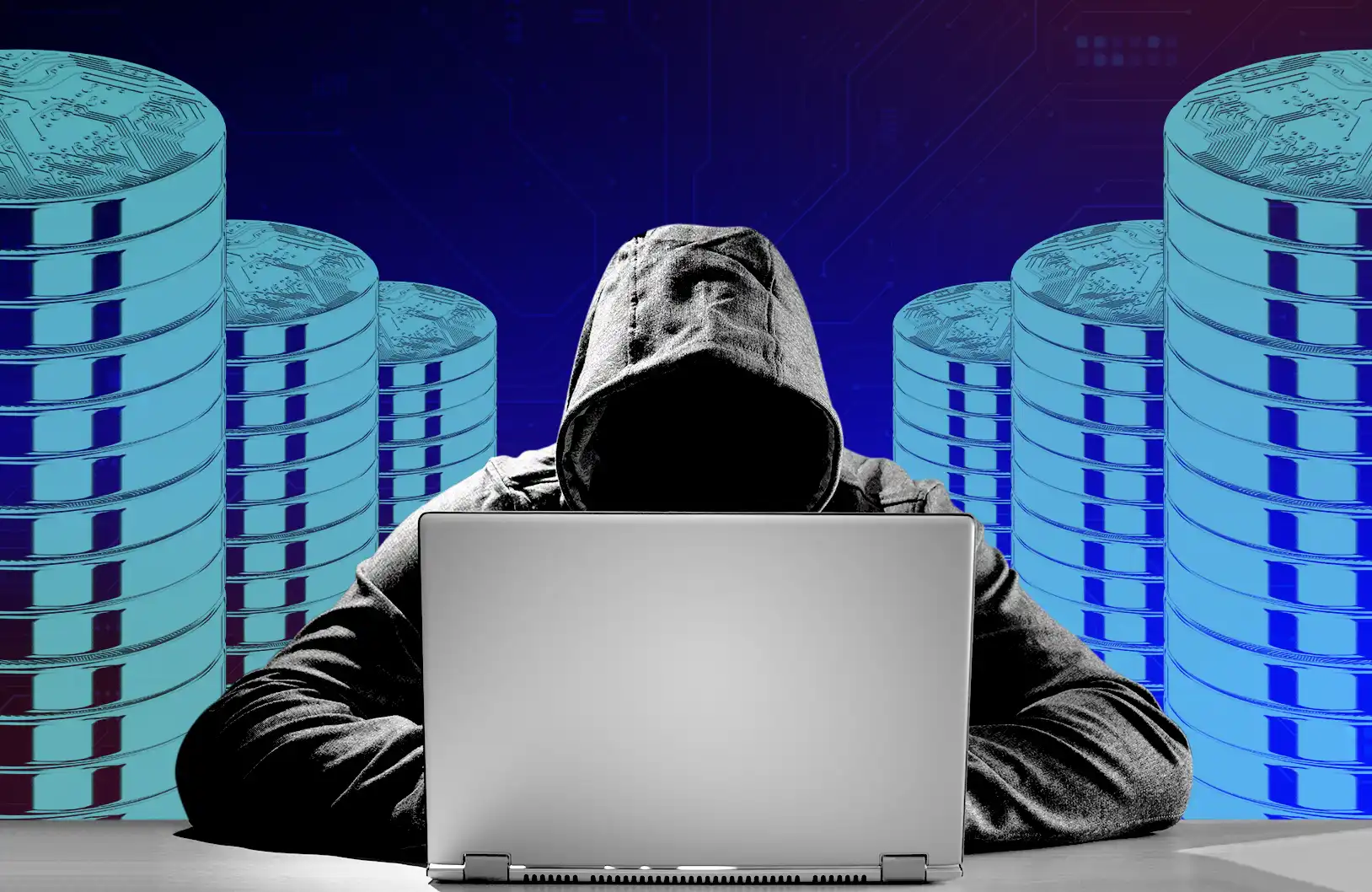Bitcoin Miners Turn to AI, but Revenues Lag Behind
Recently, bitcoin has a hangover. Gone are the six-figure euphoric highs. Reality strikes: BTC hovers around 87,000 dollars, and the wind is turning for those living off its heartbeat… notably the miners. Less visible than traders, they are nevertheless the primary sentinels of the network. And today? Their business model is on artificial respiration. Between exploding hashrate and falling revenues, the industry is going through a pivotal period. Welcome to the behind-the-scenes of an ecosystem trying to evolve towards AI.

In Brief
- The global hashrate explodes, but miners’ revenues stagnate or even flirt with the critical threshold.
- Return on investment now exceeds three years for new bitcoin mining machines.
- Cipher, IREN, and CleanSpark turn to AI and cloud to diversify their revenues.
- Stock markets are booming, driven by announcements despite a sharp decline in real profitability.
Bitcoin in the red, but the hashrate breaks records
On one side, the global hashrate for bitcoin mining reaches a historic peak at 1.16 ZH/s. On the other, the hashprice falls to 35 $/PH/s, gnawing margins down to the bone. In short? More power, but for less revenue. The return on investment for machines now exceeds 1,200 days. At this pace, even the most efficient rigs become energy-consuming kettles.
The report from The Miner Mag accurately summarizes the situation , saying mining margins have weakened as hashprices have fallen and machine amortization periods have lengthened, even though publicly traded mining companies have bounced back thanks to analyst recommendation upgrades and new deals in high-performance computing (HPC).
In this climate, some miners give in to the temptation of over-indebtedness. Others just “bite the bullet,” hoping for kinder days in BTC prices. Meanwhile, the infrastructure keeps growing… mechanically.
Bitcoin in the cloud: miners bet on AI
Facing this downward spiral, industry giants adapt their strategy. CleanSpark, Cipher Mining, IREN: all redirect their computing power towards the cloud and HPC (High Performance Computing), hoping to find new cash cows.
And it’s starting to pay off… at least on the markets. J.P. Morgan recently boosted morale by raising its forecasts: Cipher could climb to $18, IREN to $39. And why this enthusiasm? Because Cipher has already secured 600 MW of capacity for AWS and Google via Fluidstack, while IREN signed a $9.7 billion contract with Microsoft to host Nvidia GB300 GPUs.
But beware of the magnifying effect. The report from The Miner Mag points out that the revenues from these services, although increasing, remain too low to truly compensate for the sharp drop in bitcoin mining gains.
In short, AI will not save everyone. And certainly not right away.
When the stock market booms while bitcoin wears out
Curiously, despite struggling fundamentals, mining stocks are soaring. Cipher Mining rises 4.59%, CleanSpark 4.42%, and even outsiders like RIOT or MARA regain color. The engine? Optimistic analyst ratings, juicy deals with tech giants, and a persistent faith in BTC’s long-term potential.
Yet, not everything is rosy. JP Morgan analysts have lowered their targets for MARA ($13) and RIOT ($17), pointing to their large BTC reserves and stock dilution. In short: these companies stockpile bitcoin like piling up buoys… but at what cost?
The entire mining ecosystem finds itself in a strange balance between innovation, speculation, and disillusionment.
Key figures to remember
- The global hashrate peaks at 1.16 ZH/s;
- The bitcoin price at the time of writing: $87,243;
- The hashprice has fallen to $35/PH/s, down from $55 just a quarter ago;
- AI/HPC contracts signed approach $10 billion, but the revenues remain minimal;
- Return on investment exceeds 1,200 days in an industry historically profitable within a few months.
While the United States funds abundantly and Europe seeks greener regulation, China moves covertly. Officially, it still bans bitcoin mining. Unofficially? It hosts up to 20% of the global hashrate. The low-cost electricity from Xinjiang and Sichuan powers ever more numerous “ghost” farms. A shadow strategy that says a lot about geopolitical ambiguities around BTC. For Beijing, it might be better to mine discreetly than depend on the dollar.
Disclaimer: The content of this article solely reflects the author's opinion and does not represent the platform in any capacity. This article is not intended to serve as a reference for making investment decisions.
You may also like
The latest SOL proposal aims to reduce the inflation rate, but what are the opponents thinking?
The Solana community has proposed SIMD-0411, which would increase the inflation deceleration rate from 15% to 30%. It is expected to reduce SOL issuance by 22.3 million over the next six years and accelerate the reduction of the inflation rate to 1.5% before 2029.

IoTeX launches the world's first on-chain identity solution ioID designed specifically for smart devices
ioID is revolutionizing identity management for smart devices, allowing DePIN to authenticate devices, protect data, and unlock next-generation application scenarios within a user-owned ecosystem compatible with any blockchain.

Mars Morning News | Last week, global listed companies made a net purchase of $13.4 million in BTC, while Strategy did not buy any Bitcoin last week
Expectations for a Federal Reserve interest rate cut in December have risen, with Bitcoin briefly surpassing $89,000 and the Nasdaq surging 2.69%. There are internal disagreements within the Fed regarding rate cuts, causing a strong reaction in the cryptocurrency market. Summary generated by Mars AI. This summary is generated by the Mars AI model and its accuracy and completeness are still being iteratively updated.

The covert battle in the crypto industry escalates: 40% of job seekers are North Korean agents?
North Korean agents have infiltrated 15%-20% of crypto companies, and 30%-40% of job applications in the crypto industry may come from North Korean operatives. They act as proxies through remote work, using malware and social engineering to steal funds and manipulate infrastructure. North Korean hackers have stolen over $3 billion in cryptocurrency to fund nuclear weapons programs. Summary generated by Mars AI. This summary is generated by the Mars AI model, and its accuracy and completeness are still being iteratively improved.

